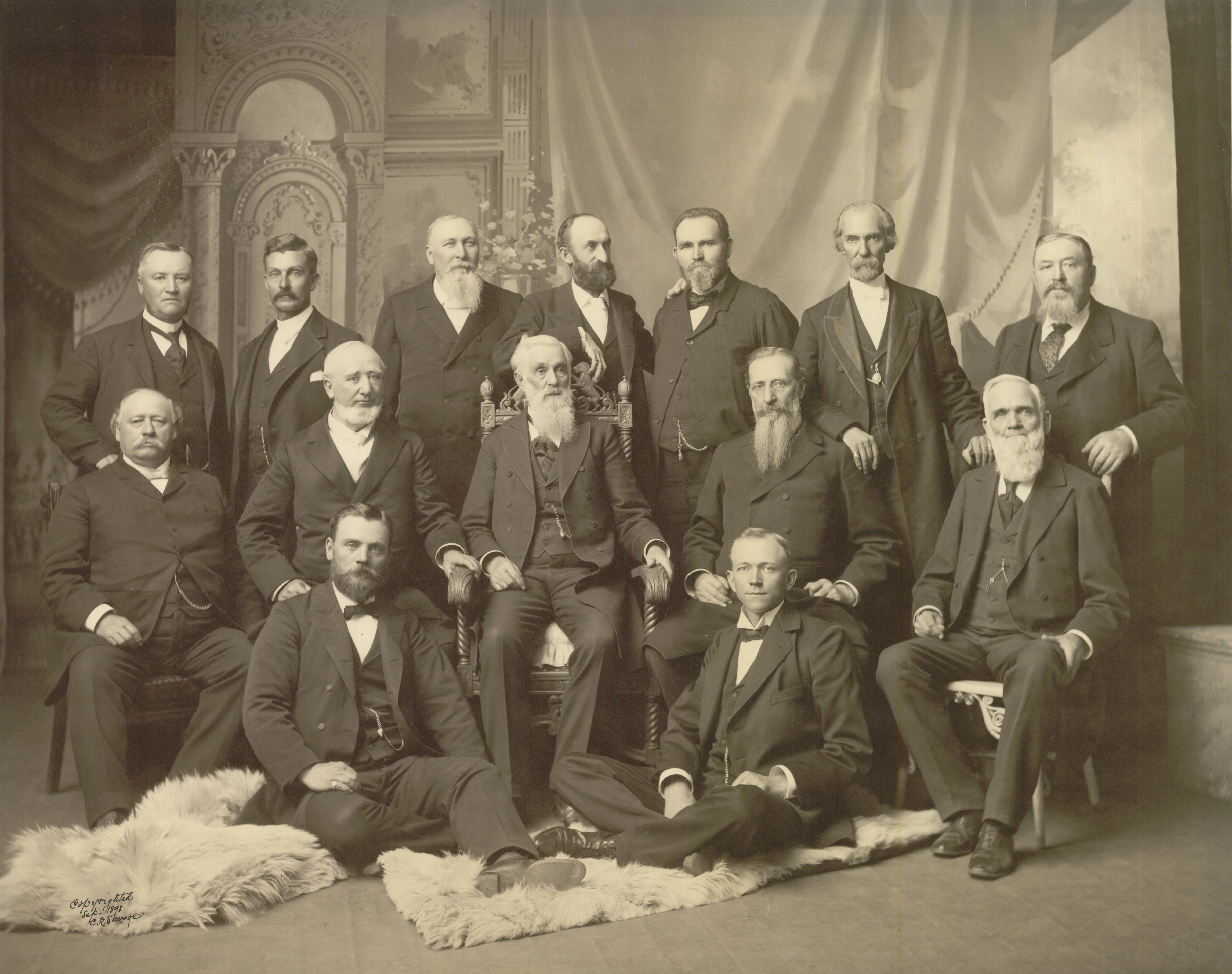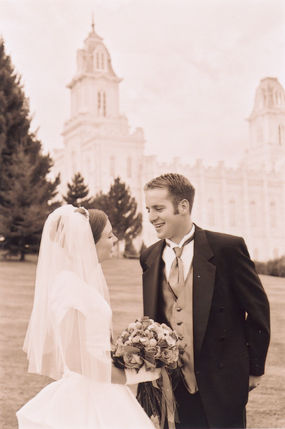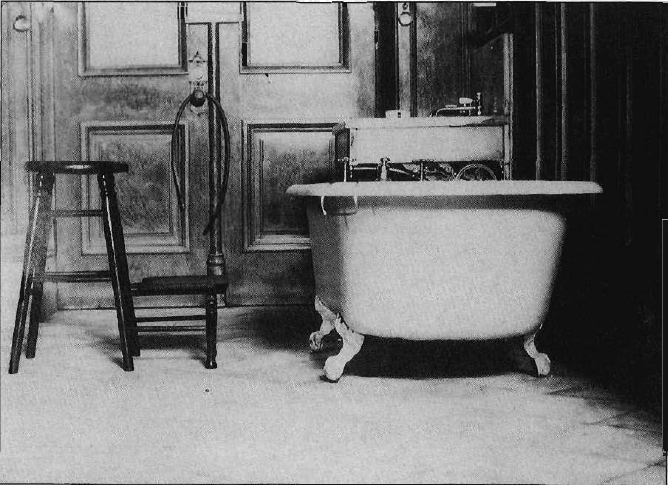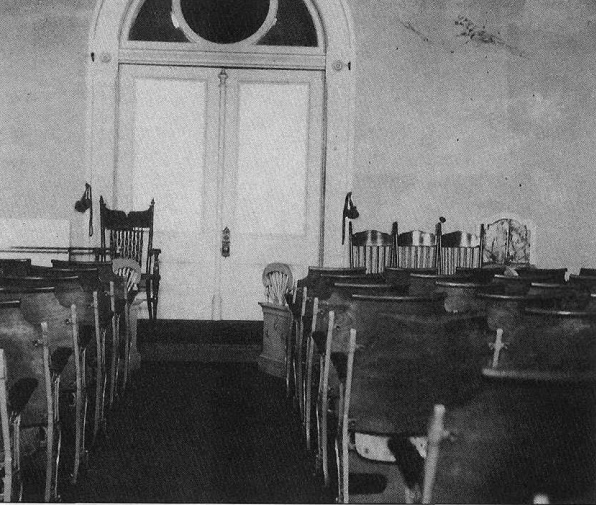|
Salt Lake City Temple
The Salt Lake Temple is a temple of the Church of Jesus Christ of Latter-day Saints on Temple Square in Salt Lake City, Utah, United States. At , it is the largest Latter-day Saint temple by floor area. Dedicated in 1893, it is the sixth temple completed by the church, requiring 40 years to complete, and the fourth temple built since the Mormon exodus from Nauvoo, Illinois, in 1846. The temple was closed in December 2019 for a general remodelling and seismic renovations that are anticipated to take approximately four years. Details The Salt Lake Temple is the centerpiece of the Temple Square in Salt Lake City, Utah. Like other Latter-day Saint temples, the church and its members consider it sacred and a temple recommend is required to enter, so there are no public tours inside the temple as there are for other adjacent buildings on Temple Square. In 1912, the first public photographs of the interior were published in the book ''The House of the Lord'', by James E. Talmage. ... [...More Info...] [...Related Items...] OR: [Wikipedia] [Google] [Baidu] |
Temple (LDS Church)
In the Church of Jesus Christ of Latter-day Saints (LDS Church), a temple is a building dedicated to be a House of the Lord. Temples are considered by church members to be the most sacred structures on earth. Upon completion, temples are usually open to the public for a short period of time (an "open house"). During the open house, the church conducts tours of the temple with missionaries and members from the local area serving as tour guides, and all rooms of the temple are open to the public. The temple is then dedicated as a "House of the Lord", after which only members who are deemed worthy are permitted entrance. Temples are not churches or meetinghouses designated for public weekly worship services, but rather are places of worship open only to the faithful where certain rites of the church must be performed. At present, there are temples in many U.S. states, as well as in many countries across the world. Several temples are at historical sites of the LDS Church, such ... [...More Info...] [...Related Items...] OR: [Wikipedia] [Google] [Baidu] |
Quorum Of The Twelve Apostles (LDS Church)
In the Church of Jesus Christ of Latter-day Saints (LDS Church), the Quorum of the Twelve Apostles (also known as the Quorum of the Twelve, the Council of the Twelve Apostles, or simply the Twelve) is one of the governing bodies in the church hierarchy. Members of the Quorum of the Twelve Apostles are apostles, with the calling to be prophets, seers, and revelators, evangelical ambassadors, and special witnesses of Jesus Christ. The quorum was first organized in 1835 and designated as a body of "traveling councilors" with jurisdiction outside areas where the church was formally organized, equal in authority to the First Presidency, the Seventy, the standing Presiding High Council, and the high councils of the various stakes. The jurisdiction of the Twelve was originally limited to areas of the world outside Zion or its stakes. After the apostles returned from their missions to England, Joseph Smith altered the responsibilities of the quorum: it was given charge of the affairs ... [...More Info...] [...Related Items...] OR: [Wikipedia] [Google] [Baidu] |
Baptism For The Dead
Baptism for the dead, vicarious baptism or proxy baptism today commonly refers to the religious practice of baptizing a person on behalf of one who is dead—a living person receiving the rite on behalf of a deceased person. Baptism for the dead is best known as a doctrine of the Latter Day Saint movement, which has practiced it since 1840. It is currently practiced by the Church of Jesus Christ of Latter-day Saints (LDS Church), where it is performed only in dedicated temples, as well as in several other current factions of the movement. Those who practice this rite view baptism as an essential requirement to enter the Kingdom of God, and therefore practice baptism for the dead to offer it by proxy to those who died without the opportunity to receive it. The LDS Church teaches that those who have died may choose to accept or reject the baptisms done on their behalf. Baptism for the dead is mentioned in () as proof of a physical resurrection, though the exact meaning of the phra ... [...More Info...] [...Related Items...] OR: [Wikipedia] [Google] [Baidu] |
Sealing (Mormonism)
Sealing is an ordinance (ritual) performed in Latter Day Saint temples by a person holding the sealing authority. The purpose of this ordinance is to seal familial relationships, making possible the existence of family relationships throughout eternity. Sealings are typically performed as marriages or as sealing of children to parents. They were performed prior to the death of Joseph Smith (the founder of the Latter Day Saint movement), and are currently performed in the largest of the faiths that came from the movement, The Church of Jesus Christ of Latter-day Saints (LDS Church). LDS Church teachings place great importance on the specific authority required to perform these sealings. Church doctrine teaches that this authority, called the priesthood, corresponds to that given to Saint Peter in . Sealings Faithful Latter Day Saints believe civil marriages are dissolved at death, but that a couple who has been sealed in a temple will be married beyond physical death and the res ... [...More Info...] [...Related Items...] OR: [Wikipedia] [Google] [Baidu] |
Washing And Anointing
Washing and anointing (also called the initiatory) is a temple ordinance practiced by the Church of Jesus Christ of Latter-day Saints (LDS Church) and Mormon fundamentalists as part of the faith's endowment ceremony. It is a sacred ordinance for teenagers and young adults, similar to chrismation. The ordinance is performed by the authority of the Melchizedek priesthood by an officiator of the same gender as the participant. In the ritual, a person is sprinkled with water, which is symbolically similar to the washing done by priests prior to entering the temple during the time of Moses. After the washing, the officiator anoints the person with consecrated oil while declaring blessings. The officiator then declares that the person is anointed to become a "king and priest" or a "queen and priestess" in the afterlife. Once washed and anointed, the participant is dressed in the temple garment, a religious white undergarment which the participant is instructed to wear throughout his ... [...More Info...] [...Related Items...] OR: [Wikipedia] [Google] [Baidu] |
Endowment (Latter Day Saints)
In the theology of the Latter Day Saint movement, an endowment refers to a gift of "power from on high", typically associated with the ordinances performed in Latter Day Saint temples. The purpose and meaning of the endowment varied during the life of movement founder Joseph Smith. The term has referred to many such gifts of heavenly power, including the confirmation ritual, the institution of the High Priesthood in 1831, events and rituals occurring in the Kirtland Temple in the mid-1830s, and an elaborate ritual performed in the Nauvoo Temple in the 1840s. The term ''endowment'' has the most significance to adherents of the Latter Day Saint branch known as Mormonism, including most prominently the Church of Jesus Christ of Latter-day Saints (LDS Church), which practices a form of the Nauvoo endowment. The Nauvoo endowment ceremony, introduced by Joseph Smith and codified by Mormon leader Brigham Young, consisted of symbolic acts and covenants designed to prepare participants t ... [...More Info...] [...Related Items...] OR: [Wikipedia] [Google] [Baidu] |
Ordinance Room
In temples of the Church of Jesus Christ of Latter-day Saints (LDS Church), an ordinance room is a room where the ceremony known as the '' Endowment'' is administered, as well as other ordinances such as Sealings. Some temples perform a progressive-style ordinance where patrons move from room to room, each room representing a progression of mankind: the ''Creation room'', representing the Genesis creation story; the ''Garden room'' represents the Garden of Eden where Adam and Eve lived prior to the fall of man; the ''World room'', where Adam and Eve lived after the fall; the ''Terrestrial room''; and the ''Celestial room'' representing the Celestial Kingdom of God, or more commonly, heaven. There is also an additional ordinance room, the Sealing room, and at least one temple has a Holy of Holies. These two rooms are reserved for the administration of ordinances beyond the Endowment. The Holy of Holies is representative of that talked about when the temple is discussed in the bib ... [...More Info...] [...Related Items...] OR: [Wikipedia] [Google] [Baidu] |
Jordan River (Utah)
The Jordan River, in the state of Utah, United States, is a river about long. Regulated by pumps at its headwaters at Utah Lake, it flows northward through the Salt Lake Valley and empties into the Great Salt Lake. Four of Utah's six largest cities border the river: Salt Lake City, West Valley City, West Jordan, and Sandy. More than a million people live in the Jordan Subbasin, part of the Jordan River watershed that lies within Salt Lake and Utah counties. During the Pleistocene, the area was part of Lake Bonneville. Members of the Desert Archaic Culture were the earliest known inhabitants of the region; an archaeological site found along the river dates back 3,000 years. Mormon pioneers led by Brigham Young were the first European American settlers, arriving in July 1847 and establishing farms and settlements along the river and its tributaries. The growing population, needing water for drinking, irrigation, and industrial use in an arid climate, dug ditches and canals, buil ... [...More Info...] [...Related Items...] OR: [Wikipedia] [Google] [Baidu] |
City Creek (Utah)
City Creek is a small but historically important mountain stream that flows from City Creek Canyon and across part of Salt Lake City, Utah, and into the Jordan River which empties into the Great Salt Lake. City Creek's head is about 8 miles (13 km) up City Creek Canyon northeast of Downtown Salt Lake City. The entire stream measures only about 14.5 miles (23 km) long. Melting snow from adjacent mountains provides most of City Creek's currents, but the stream flows year-round because of natural springs at the head of the creek. Until 1882 City Creek served as the city's primary water supply, and it continues to provide drinking water to The Avenues and northern parts of Salt Lake City. History Vanguards of the first Mormon pioneer settlers of Utah camped by the mouth of City Creek Canyon on July 22, 1847. This area is now about the intersection between State Street and North Temple in Salt Lake City, Utah. The stream originally forked into a stream heading south through ... [...More Info...] [...Related Items...] OR: [Wikipedia] [Google] [Baidu] |
Thames & Hudson
Thames & Hudson (sometimes T&H for brevity) is a publisher of illustrated books in all visually creative categories: art, architecture, design, photography, fashion, film, and the performing arts. It also publishes books on archaeology, history, and popular culture. Headquartered in London, it has a sister company in New York City, and subsidiaries in Melbourne, Singapore, and Hong Kong. In Paris it has a sister company, Éditions Thames & Hudson, and a subsidiary called Interart which distributes English-language books. The Thames & Hudson group currently employs approximately 150 staff in London and approximately 65 more around the world. The publishing company was founded in 1949 by Walter and Eva Neurath, who aimed to make the world of art and the research of top scholars available to a wider public. The company's name reflects its international presence, particularly in London and New York. It remains an independent, family-owned company, and is one of the largest publish ... [...More Info...] [...Related Items...] OR: [Wikipedia] [Google] [Baidu] |
Molten Sea
The Molten Sea or Brazen Sea ( ''yām mūṣāq'' "cast metal sea") was a large basin in the Temple in Jerusalem made by Solomon for ablution of the priests. It is described in and . It stood in the south-eastern corner of the inner court. According to the Bible it was five cubits high, ten cubits in diameter from brim to brim, and thirty cubits in circumference. The brim was like the rim of a cup or like a lily blossom, and its thickness was a hand breadth", three or four inches. It was placed on the backs of twelve oxen, standing with their faces outward. It was capable of containing two or three thousand baths of water (). The fact that it was a wash basin which was too large to enter from above lends to the idea that water would likely have flowed from it down into a subcontainer beneath. The water was originally supplied by the Gibeonites, but was afterwards brought by a conduit from Solomon's Pools. The molten sea was made of brass or bronze, which Solomon had taken fro ... [...More Info...] [...Related Items...] OR: [Wikipedia] [Google] [Baidu] |
Jerusalem
Jerusalem (; he, יְרוּשָׁלַיִם ; ar, القُدس ) (combining the Biblical and common usage Arabic names); grc, Ἱερουσαλήμ/Ἰεροσόλυμα, Hierousalḗm/Hierosóluma; hy, Երուսաղեմ, Erusałēm. is a city in Western Asia. Situated on a plateau in the Judaean Mountains between the Mediterranean Sea, Mediterranean and the Dead Sea, it is one of the List of oldest continuously inhabited cities, oldest cities in the world and is considered to be a holy city for the three major Abrahamic religions: Judaism, Christianity, and Islam. Both Israelis and Palestinians claim Jerusalem as their Capital city, capital, as Israel maintains its primary governmental institutions there and the State of Palestine ultimately foresees it as its seat of power. Because of this dispute, Status of Jerusalem, neither claim is widely recognized internationally. Throughout History of Jerusalem, its long history, Jerusalem has been destroyed at least twice, Sie ... [...More Info...] [...Related Items...] OR: [Wikipedia] [Google] [Baidu] |








